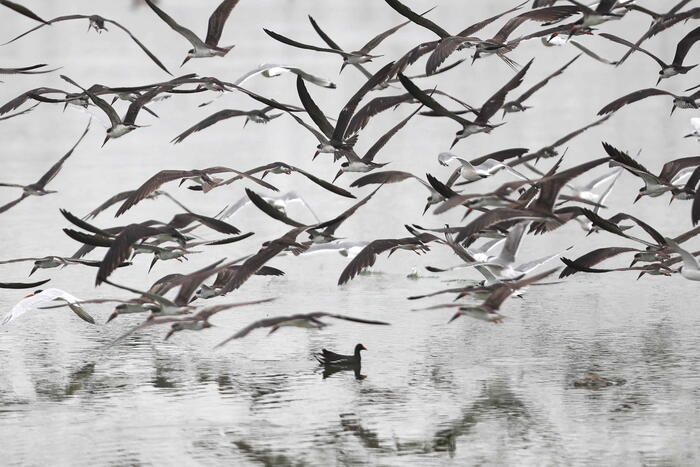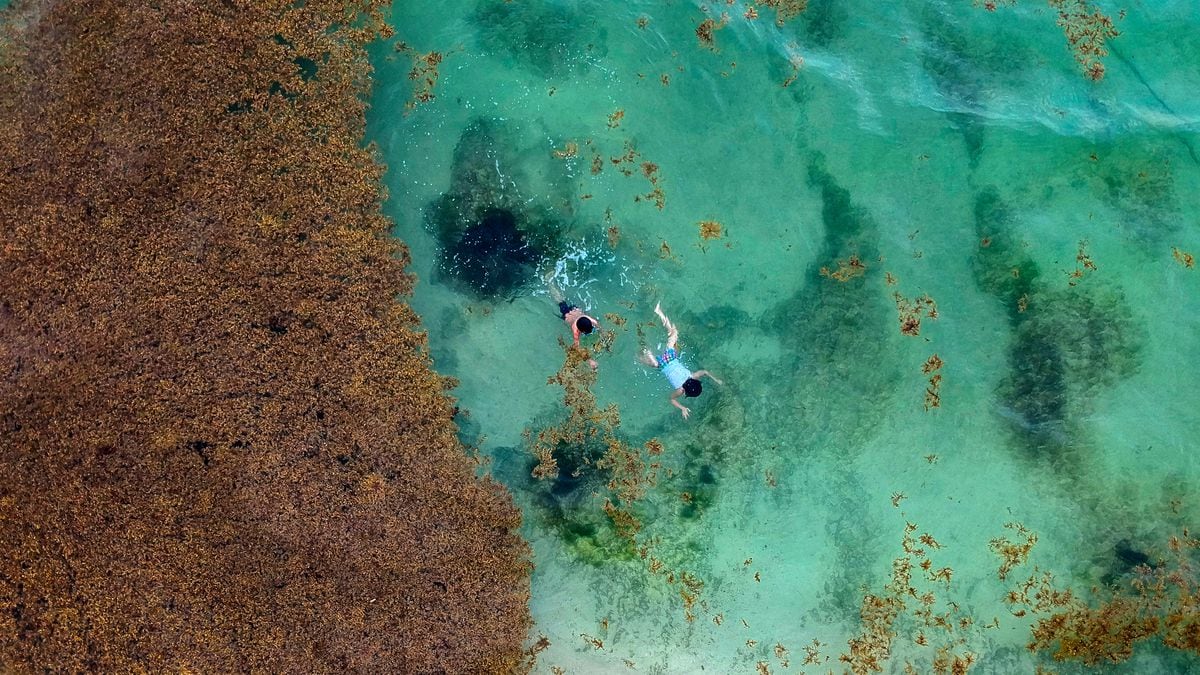Too hot, too early.
Brittany experienced a "very significant proliferation" of green algae in 2021 due to a sunny spring followed by heavy rainfall which contributed to the growth of these dangerous ulvae in the event of decomposition, according to the study center and recovery of algae (Ceva).
“Objectively, we have had a bad year with a very important proliferation.
Over the period April to September, we would be + 40% or + 50% compared to the multi-year average, ”Sylvain Ballu, Ceva monitoring project manager, told AFP, specifying that these figures were provisional.
Since 2002, the Ceva has carried out a surveillance flight every month between April and October, at low tide and by large tidal coefficient, as part of the monitoring of green tides.
Present at sea in its natural state, green algae proliferate in Breton bays, where they are nourished by inputs of nitrates spread by farmers in the fields and the surpluses of which are transported by coastal rivers.
Read also Côtes-d'Armor: the fight of a retiree against green algae
This year, two bays in the Côtes d'Armor (Fresnaye and Saint-Brieuc) have concentrated three quarters of the strandings of green algae.
In these shallow bays with little exposure to storms, green algae grew strongly in the spring due to exceptional sunshine in April.
Then the June thunderstorms brought new nitrogen flows to the algae when they needed it most to proliferate.
"The flows of certain rivers have increased tenfold or fifteen times" during this period, said Mr. Ballu.
"Limited impact" of the public fight plan
Conversely, the bays of Douarnenez and Concarneau (Finistère), which had been cleaned by winter storms, were hardly affected by this phenomenon. Mr. Ballu recalled that the Breton rivers had known “substantial improvements” for several years with nitrogen concentrations sometimes “divided by two”. But this is still insufficient to prevent the formation of green tides when the weather conditions are unfavorable.
The public plans to fight against the proliferation of green algae in Brittany were "ill-defined" and had only a "limited impact", according to the Court of Auditors which recommended in July to promote agriculture "with low leakage. of nitrates ”. “We can see that the dynamic of mobilizing farmers has run out of steam in most watersheds. Thus, the applied nitrogen pressure has stagnated since 2015 ”, write the magistrates who recall that“ the nitrogen (nitrates) present in the berries is more than 90% of agricultural origin ”.













/cloudfront-eu-central-1.images.arcpublishing.com/prisa/S7ERVSCT4FUVX6R7TUVBDNTH5Y.jpg)
